






A society in a prolonged transition, with an artificial and ankylosed political system, in which the rift between politicians and citizens is ever greater, can use the electoral years to regulate or even reform the political space. But for this we need a real autonomy of the economy that escapes control or political intervention. Any analysis of politics, either as a source and implementation of decisions, or as a struggle for decision-making positions, presupposes a vision of power. Starting from the premise that the economy has warmed up or even overheated, if we think about what economists call its "growth potential", then we must lucidly assess the risks that loom in this situation. An expansion of consumption, fueled by spectacular wage increases in the public sector, may ignite inflation in the coming months beyond the NBR's expectations. Apart from the risks of inflaming inflation, rising interest rates and increasing the cost of borrowing by the state, there is another danger associated with the overheating of the economy by consumption: the devaluation of the leu. The devaluation pressures are, for the most part, the consequences of low state revenues, caused by reckless fiscal and salary policies, which will produce larger deficits. When consumption is the driving force, then tax revenues should have increased as well. But even if the INS had exaggerated a bit with the assessment of black and gray markets, which are also included in the GDP calculations, our economy and its apparently robust growth is far too fragile to accommodate reckless economic policies. In the event of a crisis, what is earned today in salary is not worth much tomorrow, a demonstration experienced after 2008, when the economy was simply "humming".
So the phrase "white money for dark days" fits perfectly with the trend of the year of grace 2022.
General manager: Emanuela Cretu, ema.cretu@infomediu.eu
Deputy Editor in Chief: Stere Cretu, redactie@infomediu.eu
Editors: Ella Dobre, Ana Mihalcea, Relu Stefan Alina Ionescu redactie@infomediu.eu
Graphic designer Laura Ionescu
Subscriptions: abonamente@infomediu.eu
Marketing & Events marketing@infomediu.eu evenimente@infomediu.eu
Office Assistant: fax: office@infomediu.eu
Magazine edited by: InfoMediu Europa & Partners
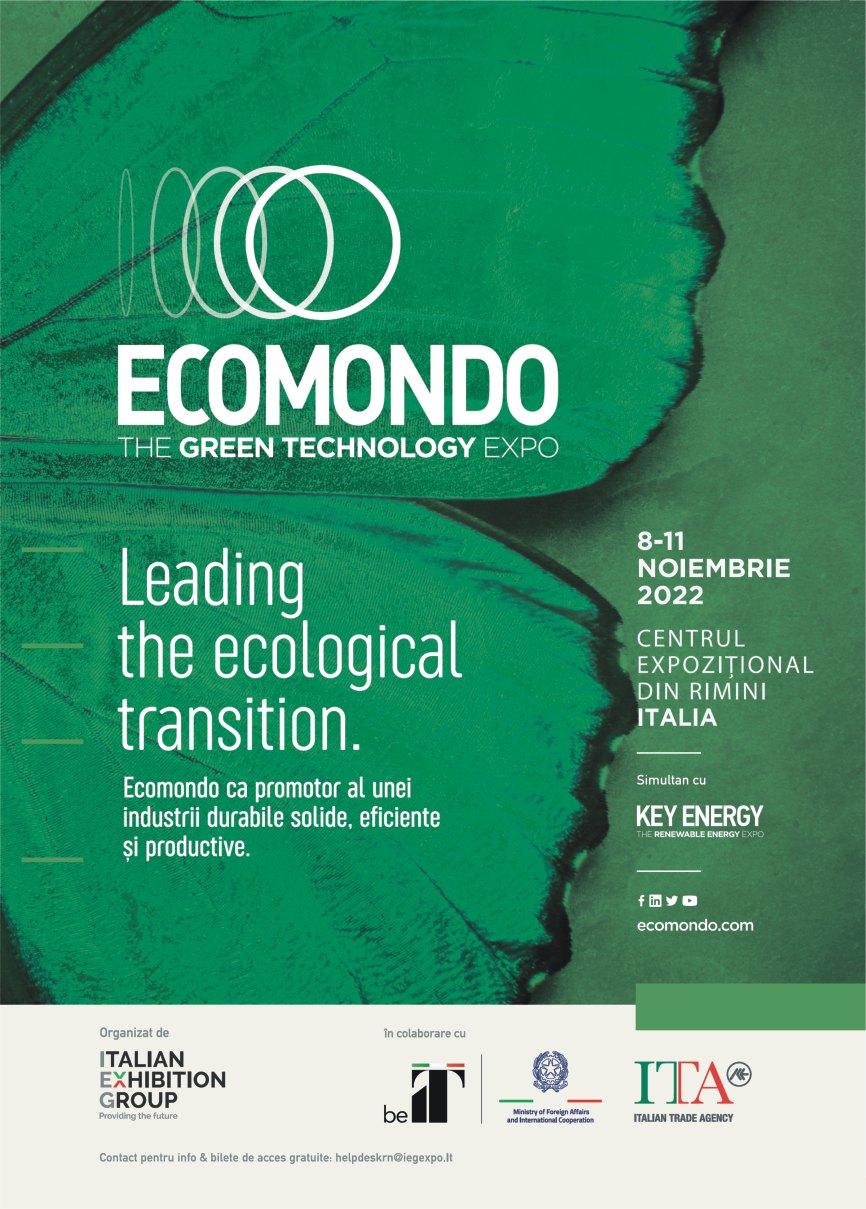
The human cost of climate change is making headlines
almost daily. In a world of rising geopolitical tensions and daunting economic challenges, how can we seize the opportunity the upcoming UN Climate Change Conference offers to inspire an approach to mitigation and adaptation that is based on trust, justice, and equity?


the world, I see their determination to make COP27 a success Already, societies are starting to act. Climate adaptation and new forms of collaboration are gaining traction, and investment in climate tech is booming This includes new carbon-removal technologies, electric transport solutions, and renewable energies. As a result, clean-energy prices continue to fall: almost two-thirds of renewable power added n G20 countries in 2021 cost less than the cheapest coal-fired options. My country, Egypt, is on track to produce 42% of its energy from renewable resources by 2035.
Some fear that this year's United intense droughts wildfires, storms, and Nations Climate Change Conference – floods. Millions of people are already to be held here on November 6-18 – battling for survival will be an unintended casualty of the And that s with temperatures having geopolitical tensions and economic risen by just 1.1° Celsius, relative to challenges the world is facing. I believe pre-industrial levels. As the the opposite: COP27 represents a Intergovernmental Panel on Climate unique and timely opportunity for the Change has made clear every world to come together, recognize our additional tenth of a degree makes common interests, and restore matters worse. Yet the changes multilateral cooperation. needed to avert catastrophe are not The human cost of climate change is being made, at least not fast enough, making headlines almost daily. Global and the developing world is warming is no longer a distant or increasingly frustrated with rich theoretical threat, but an immediate countries' refusal to pay their fair share material one – a phenomenon that for a crisis for which they bear affects each of us, our families, and overwhelming responsibility our neighbors. No society has been But there is reason for hope. In my left unscathed by more frequent and discussions with delegations around
At the same time, civil society is devising mechanisms for holding companies and governments to account, guarding against greenwashing, and ensuring a just transition. There is a new focus on restoring nature.
More ambition, scale, and speed are needed, and the rules remain unclear or contested. But a process is underway, and there is no going back. Even in countries that might seem to be wavering in their commitments –say, by investing n fossil-fuel infrastructure – officials insist that stopgap measures necessitated by immediate challenges should not be mistaken for long-term strategies. No one doubts the greener road ahead. The question for those of us who will participate in COP27 is straightforward:
How can we seize the opportunity the that are already unavoidable. The bill A just transition must account for the conference offers to create a sense of for this agenda must be divided fairly needs of various regions For example, common endeavor, prevent To date, a disproportionate share of African countries are committed in backsliding, and nspire an approach climate finance has been directed principle to adopting renewable energy based on science, trust, justice, and toward mitigation, leaving developing and refraining from exploiting their equity? countries largely to fend for fossil-fuel resources. But 600 million At its heart, climate action is a bargain themselves in financing adaptation people in Africa – 43% of the Developing countries have agreed n investment. But even the finance continent's population – currently lack good faith to help tackle a crisis they provided for mitigation is far from electricity, and around 900 million did not cause, on the understanding sufficient and has not been delivered don't have access to clean cooking that support – particularly financial with the appropriate instruments fuels. The climate-action bargain support – would be provided to In 2009 developed countries pledged demands that this be addressed, and complement their own efforts, which to provide $100 billion annually for the continent's broader development are often limited due to their scarce climate action in the developing world needs be met, n sustainable ways resources and competing by 2020. This is only a small portion All of these imperatives must be development needs. Developed of the more than $5.8 trillion that is pursued together, with a carefully countries must uphold their end of needed (up until 2030), according to designed package of actions, rather that bargain by supporting both the UN Framework Convention on than through piecemeal measures. mitigation and adaptation, thus Climate Change's Standing Committee They are the pillars of a just transition. fulfilling their envisaged responsibilities on Finance. And yet this amount has If one is missing, the entire edifice in the Paris agreement not been delivered. We need an collapses.
On the mitigation front, we must move increase in the scale of finance Ahead of the 2015 COP in Paris, few from rhetoric to action in cutting our pledges – especially for adaptation – at believed that an agreement would be greenhouse-gas emissions and COP27, compared to those made at reached. Yet delegates from all over removing carbon from our COP26 in Glasgow the world came together and through atmosphere. All countries must Developed countries must also honor skill and perseverance, reached a embrace more ambitious Nationally the pledge they made last year to groundbreaking deal In 2022, we face Determined Contributions, and then double adaptation finance by 2025, even higher hurdles, so we must work translate those pledges into programs and they should provide the even harder to clear them. If we do, we We must act now to ensure assurances needed for the Green will usher in a new age of clean appropriate resources are available to Climate Fund's new replenishment energy, innovation exchange, food and developing countries to unlock their And the time has come to address the water security, and greater climate potential loss and damage suffered by countries justice.
At the same time we must craft a that did not cause the climate crisis. As daunting as this challenge is, we transformative adaptation agenda, so This remains contentious, but I believe have no choice but to confront it. We that communities – especially in that we can approach it constructively, must negotiate with one another climate-vulnerable regions – can guided by the priorities of developing because there can be no negotiating protect themselves from the effects countries, for the benefit of all. with the climate.
The region of Transylvania (Central Romania) brings to minds of many the legend of Count Dracula. While the legend is certainly intriguing, the region has much more to offer. Some of Europe's best-preserved medieval towns, most notably Sighisoara, Brasov and Sibiu, are located in Transylvania.


Visitors can marvel at Transylvania's unique architectural treasures, such as castles, fortified churches and centuries-old houses, while exploring sites where more than 900 years ago Saxon craftsmen and merchants established powerful and rich citadels.
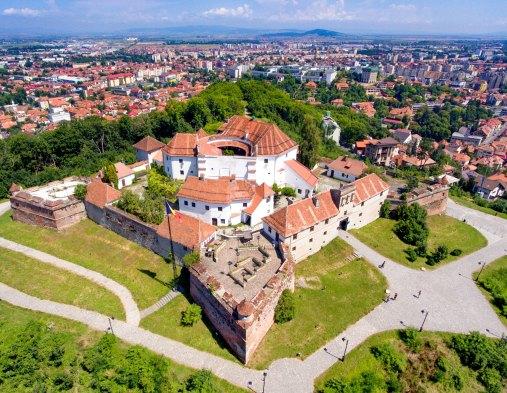

During the middle of the 12th century Saxon settlers came to the area from the Luxembourg, Lorraine, Moselle, Rhine and Wallonia regions of northwestern Europe. They called their new home 'Siebenburgen' (Septem Castra in Latin) after the seven major walled towns they built here: Bistrița (Bistritz), Sebeș (Mühlbach), Brașov (Kronstadt), Sibiu (Hermannstadt), Cluj Napoca (Klausenburg), Sighișoara (Schassburg), Mediaș (Mediasch).
Fringed by the peaks of the Carpathian Mountains and resplendent with gothic, baroque and renaissance architecture, as well as a wealth of historical attractions, Brasov Old Town, located less than three hours north of Bucharest, provides a great introduction to Transylvania region. Among Brasov's best know attractions are the Council Square, the beautiful St. Nicholas Church, the Black Church – the largest Gothic church east of Vienna – so named because of its dark walls which survived a devastating fire in 1689, and Brasov Fortress. In close proximity to Brasov are the fortified churches Harman, with its massive 13th century defending towers, and Prejmer, the biggest fortified church in Southeastern Europe. Visit Brasov's many historic sites before heading west to Sibiu.
Sibiu retains the grandeur of its earlier days when rich and powerful guilds dominated regional trade. Explore the old city center with its upper town, home to most of Sibiu's historic sites, and lower town, lined with colorful houses on cobblestone streets and bounded by imposing city walls and defense towers overlooking the river Cibin. Sibiu makes an ideal base for the exploration of the nearby countryside and villages. Located at the foothills of the Cindrel Mountains, a half-hour drive from Sibiu, is Marginimea Sibiului - a string of 18 villages, rich in architecture, history and heritage.
Designated European Capital of Culture in 2007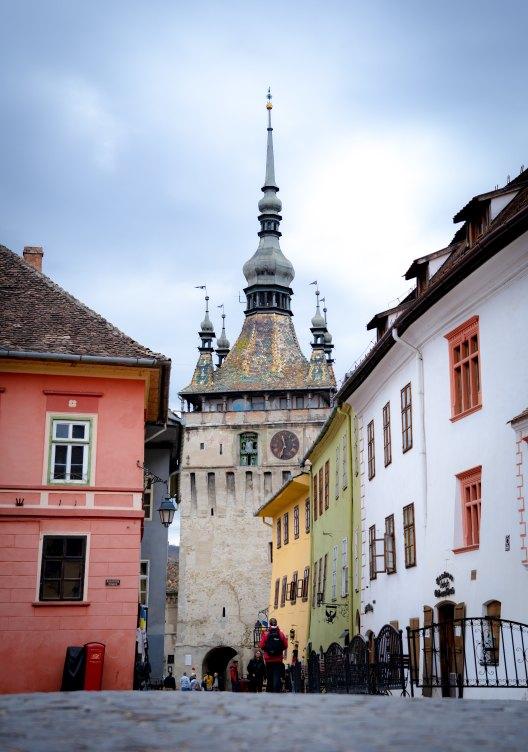
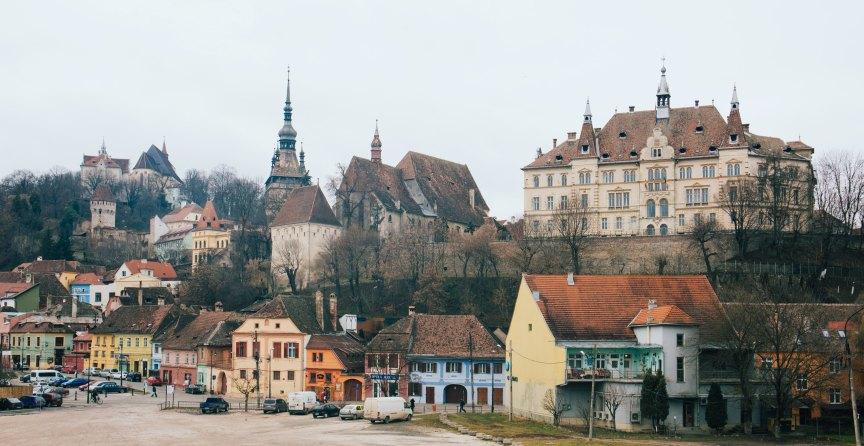
Transylvania is also home to the charming town of Sighisoara, a perfectly intact 15th century gem with nine towers, narrow passageways and cobbled streets, burgher houses and ornate churches. A UNESCO World Heritage Site, Sighisoara is also the birthplace of Vlad Draculea, nicknamed Vlad the Impaler (Vlad Tepes), ruler of Walachiasouthern Romania - from 1456 to 1462. It was Vlad who inspired Bram Stoker's fictional creation, Count Dracula. His house is just one of many attractions here. Others include: the Church on the Hill, with its 500-year-old frescoes; the Church of the Dominican Monastery known for its Transylvanian Renaissance carved altarpiece, baroque painted pulpit, Oriental carpets and 17th century organ; and the Venetian House, built in the 13th century. In the nearby countryside, another UNESCO World Heritage town, 13th century Biertan , stands high on a hill as one of the largest and most impressive medieval strongholds in Transylvania.
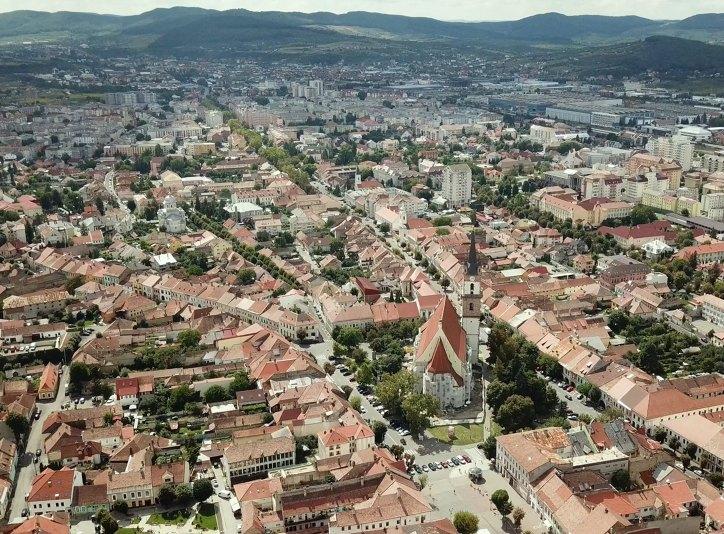
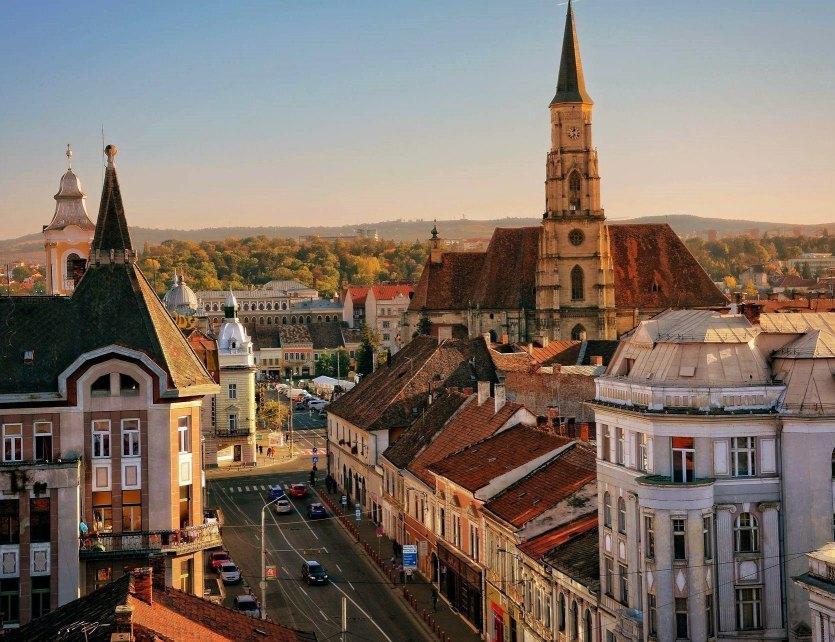
The largest city in Transylvania, Cluj Napoca, tracing its origin back to the Dacian settlement of Napoca in 2nd century A.D., is today a vibrant cultural and university center. The main square, resplendent with 18th and 19th century buildings, is dominated by the 15th century St. Michael's Church, one of the finest examples of Gothic architecture in Romania. The square is also home to the 18th century baroque Banffy Palace, housing the weaponry and Romanian painting collections of the Art Museum. Visitors who want to learn more about the region should check out the open-air section of the Ethnographic Museum of Transylvania, a true display of folk architecture. Spend an enjoyable evening at the Opera or attend a classical concert offered by the Cluj State Philharmonic.
Located at the foot of the Bargau Mountains, not far away from Borgo Pass which connects Transylvania to Bucovina, the town of Bistrita is one of the oldest in the region. Saxon colonists, who settled in the area in 1206, helped develop the town into a flourishing medieval trading post. The old town's quaint 15th and 16th century merchant houses, the remains of the 13th century fortress walls, and the city's unhurried pace have preserved some of Bistrita's once-thriving medieval atmosphere. Not to be missed attractions include: the 14th century Saxon Evangelical Church; the arcaded Sugatele row; the Silversmith's House; Coopers' Tower; and the County History Museum.
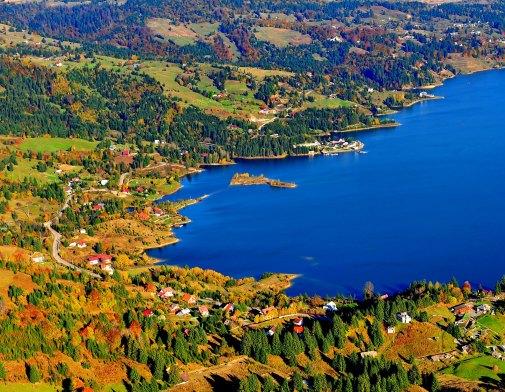

The medieval centre of the ancient settlement of Medias has a particular charm, with narrow winding lanes, centuries-old houses and a large pedestrian square. The fortified St. Margaret Evangelical Church, erected in the 15th century on the ruins of a Roman basilica, dominates the old town. The church, enclosed by two rows of walls and several defense towers (one of which served as prison cell for Vlad the Impaler in 1467), features three superb Gothic altarpieces, a colorful Baroque organ and some early 15th century frescoes.

During the middle ages, Sebes was a flourishing economic and political centre. Like all Saxon medieval citadels, the town was renowned for its crafts and trade, serving from 16th to 18th century as a seat for the Transylvanian Diet. Main attractions include: the 12th century Evangelical Church; the 14th century Fortress and the 15th century Zapolya House.


Although businesses and investors stand to make a lot of money if they can properly navigate the new risk environment, no one seems to have a good explanation for why we are where we are. Climate risks, in particular, have been systematically underestimated, and thus mispriced, for decades.
Gernot Wagner Tom Brookesclimate economist at Columbia Business School


Economists are supposed to be good at understanding risk Decisionmaking in the face of uncertainty after all, is the discipline's bread and butter
Yet at a time when real-world risks –geopolitical, macroeconomic, financial, public-health, and environmental – are piling up, many economists seem to be at a loss.
Although businesses and nvestors stand to make a lot of money if they can properly assess and navigate the current risk environment, no one seems to have a good explanation for why we are where we are. This s especially true in the case of climate change: It is now clear that the risks have been systematically underestimated, and thus mispriced, all along.
One explanation for this is that market participants have failed to understand the size and the probability of the risk, because they have been thinking about the issue in the wrong way. The climate system is not like a casino with well-defined outcomes and probabilities. As a 1987 comment in Nature put it, changes within our planet's systems may bring all kinds

painstaking work; and in an academic environment that prizes new ideas over what might seem like a mere “accounting” exercise, it is not the kind of work that brings much reward or recognition.
Nonetheless, economists going back to Simon Kuznets, the “father” of the gross domestic product, have been some of the leading critics of economic metrics that purport to represent overall well-being. GDP is central to macroeconomic analysis but it leaves out many other permitted to socialize those costs. important ndicators, such as those Such measures inevitably will fall into measuring human and planetary the realm of politics, but economists health. Standing forests and clean air must not confuse their political and water have no value in national- preferences with sound policy Those income accounting unless they enter who are ideologically inclined to look the economy directly as factors of to the “free” market as a guiding production. principle for organizing society must recognize that a market can function Fortunately an initiative by US well only when no externality is left of “unpleasant surprises.” It is as if we President Joe Biden's administration unaccounted and unpaid for were playing with decks of cards that aims to correct this shortcoming by include some unknown number of developing a new set of “statistics for Another Biden administration jokers. Moreover, one also must environmental-economic decisions.” accounting initiative could help here. account for the inherent conservatism While this effort is not the first of its The US Securities and Exchange of the science. Climate researchers, kind in the world, it is among the most Commission's proposed rules for especially, tend to err on the side of ambitious. The goal is to supplement climate-related disclosures would caution GDP with a far more comprehensive compel companies to standardize and set of accounts, and then to use this report both the mpact of their A classic case is the quantification of new metric to guide policy decisions. operations on the climate and the sea-level rise. Broadly speaking, sea Such a change is long overdue. risks that climate change poses to levels rise for three reasons melting Climate change might not have grown those operations. The SEC's effort polar ice caps, melting inland glaciers, into the problem that it has become f stops short of asking all polluters to and the fact that warmer water takes its damages had been incorporated pay for their own pollution; instead, it up more space. But n the into national accounts all along. leaves it up to investors to decide Intergovernmental Panel on Climate This points to a second, equally what to do with the new information. Change's reports in the early 2000s, important reason why climate and Economists must defend the pivotal the headline figures fully accounted other risks have been mispriced. It is role their advice plays in policymaking only for melting glaciers and thermal one thing for scientists, economists, The political forces and special expansion. Scientists of course knew and nformed members of the public interests that bear on this issue will that global warming would melt polar to recognize that many risks and skew their advice and skewer the ice, and that this effect might be the uncertainties are not priced; t is quite advisers. But that must not become most consequential of the three. But another to adopt policies that an excuse for inaction. Intellectual because the estimates for how much discourage businesses from pushing honesty demands that economists faster the poles would melt differed those risks onto society and policymakers grapple with how by so much at the time, they were For business leaders, the top climate new risks and uncertainties can and excluded from the headline figures. risk, according to a recent Federal will affect outcomes That omission has long since been Reserve Bank of San Francisco survey corrected. But it is now economists is that climate change will influence Tallying what's known is hard enough who are lagging behind n quantifying “rules and regulations related to our Accounting for hard-to-price risks and the economic damages associated business.” Executives correctly uncertainties like climatic tipping with rising seas and the many other anticipate that policymakers will want points s harder still. But recognizing interlinked risks and uncertainties them to pay for greenhouse-gas those risks and uncertainties makes accompanying climate change. emissions and other negative clear that political action must come Quantifying climate-related damage s externalities instead of being sooner rather than later
Executive Director Strategic Communications at the European Climate Foundation
If corporations – including even fossil-fuel companies – are now “climate leaders,” fully and loudly committed to the netzero cause, why are emissions still rising? The answer lies in the voluntary nature of net-zero pledges.
Walking down a Toronto street business interest, investor recently I saw an ad touting a fossil- expectations, and consumer fuel company's net-zero credentials. pressure.
McKennaformer Canadian minister of environment and climate change

Chair of the United Nations Secretary-General’s High-Level Expert Group on the Net-Zero Emissions Commitments of Non-State Entities
But to see such belief-straining But f corporations – ncluding even claims, I would not even need to fossil-fuel companies – are now leave my house. “climate leaders,” fully and loudly According to a study by the Guardian committed to the net-zero cause, and InfluenceMap, such ads are all why are emissions still rising? A look over Google. Ads for oil giant Shell, at the history of climate action for example, appeared on 86% of reveals the answer searches for “net zero,” with many Over the last 20 years, a diverse array promoting the company's pledge to of climate initiatives has sought to reach net-zero emissions by 2050 persuade businesses and investors to Are corporations finally waking up to accept the idea of setting climatethe urgency of the climate crisis, or is related targets, cutting emissions, this just more greenwashing? and then setting even more One thing is certain: the climate crisis ambitious targets These initiatives is escalating fast. California is have had one thing in common: all enduring record-breaking heat waves. have been voluntary A third of Pakistan is under water As anyone who has ever broken a China is suffering a withering drought, New Year's resolution knows which may have global ramifications firsthand, a promise made is not And that s just what is happening always a promise kept. If someone right now. From cold snaps in Texas says they will achieve net-zero, how to wildfires in Europe, climate change can we be sure that they are taking has become impossible to ignore. the steps needed to deliver? Right Climate action has come a long way now, we can't. since the Paris climate agreement This has enabled “climate coasting,” was signed in 2015. Notably, net-zero with companies marketing has gone mainstream, with some themselves as environmentally 90% of global GDP now covered by conscious while continuing with net-zero targets And it is not just business as usual, or close to it. In governments that have adopted fact, as it stands, only one in three them; many of the world's biggest corporate net-zero plans cover the companies have done so, too, company's full carbon footprint, motivated by a combination of including that of its supply chain. And
not one of the world's biggest account for issues of equity and corporate polluters has fully climate justice. Regional and sectoral explained how it plans to achieve standard-setters can then adopt our net-zero emissions criteria, thereby ensuring consistency As United Nations Secretary-General and comparability António Guterres recently put it, “The Second, voluntary schemes are not world is n a race against time, and we enough We don't need New Year's cannot afford slow movers, fake resolutions; we need new business movers, or any form of plans. Regulation will be essential greenwashing.” These are the here, both to ensure that voluntary problems the High-Level Expert climate roadmaps are replaced by Group on Net-Zero Emissions mandatory strategies and to level the Commitments, which I chair, is meant playing field. A central objective of the to solve. We are an independent, High-Level Expert Group s to map the diverse group of experts determined needed regulations. to provide science-based Finally, accountability is essential. recommendations for achieving the When companies, banks, investors, goal so many governments and cities, and regions make net-zero companies have embraced. commitments, we must be able to Our work is just beginning, but three trust them. Fair rules of engagement right. Success would not only give us things are already clear. First, a pledge will help. But governments, a shot at stabilizing the climate; it without a plan is meaningless corporations, and financiers must also would bring vast economic Companies need to align their embrace radical transparency opportunities. According to McKinsey, business strategies with their growing demand for net-zero commitments take ambitious action, offerings could generate more than and start delivering progress Progress will be easy to spot: $12 trillion in sales annually by 2030 immediately. And this does not mean investment in clean energy will Last year, I left politics to dedicate my fudging the numbers with supersede investment in fossil fuels, time to the two things that mattered questionable offsets; the only credible and emissions will fall. most to me: my kids and climate way to achieve net-zero is to slash Already, our expert group has change. The two priorities are deeply emissions engaged more than 800 groups, met interconnected. If we are to avoid a To support this effort, the High-Level with thousands of people, and future where our children are buying Expert Group will define what it will received almost 300 submissions “net-zero” bacon between floods and take to achieve net-zero emissions. detailing how net-zero commitments fires, we must close the gap between This includes establishing clear can be improved – a clear indication of the promises we hear and the action criteria for credible net-zero plans that how keen stakeholders are to get this we need

The view of Romania producing high- The transition to democracy took quality wines may seem, for many at place after December 1989, when least, surprising. This is especially so if Romania began a new chapter in its we take into account its relatively modern history. Of course, the return recent history of almost 50 years of to private property has been a long communism and the chaos of the and often chaotic process, especially 'transition production' of the early '90s for the wine industry when everything was focused on the Land and real estate restitution, as production of low-quality sweet wines well as planning a strategy to 'repair' and the cult of hybrid grape varieties. the inherited reputation of poor During the communist period, wine quality wines were challenges that the production was centralized around IAS new generation of wine producers (Întreprindere Agricolă de Stat) or SAE faced. Basically, the evolution of (State Agricultural Enterprise) and Romanian wine after the '90s was slow wine-growing centers such as Jidvei, but achieved some spectacular results Cotnari or Murfatlar which each over the years, like the maturation of a managed thousands of hectares. The Fetească Negră with a good ageing only exceptions were the research potential. centers where high-quality wines were And as a result of Romania's still produced, created either for accession to the European Union in export or for the high up members of 2007, things changed significantly for the Communist Party the better With the help of European In communist Romania, the emphasis funds more than 40,000 hectares was on production rather than quality were replanted with new grapevines, Most vineyards consisted of varieties replacing the old vineyards with hybrid with high productivity and resistance varieties. And the story continues such as Muscat Ottonel, Chasselas, or today with the more than 250 Fetească Regală. Cabernet Sauvignon producers who educate the consumer or Merlot were chosen for red wines. rewrite tradition, explore new grape From these were obtained medium varieties, and create new labels and sweet or sweet wines because the new stories.
sugar could hide certain faults in the Things have clearly changed radically wine. for the better The birth of new
Obviously, most wines were of wineries with a vision of making highquestionable quality and low in quality wines, focused either on alcohol (11-12% ABV). And most were rendering the typicity of the variety destined for export to the USSR, and and region, or on experiments with the story is that no matter the grape very good results. variety all bottles were labeled and In other words, Romania is currently shipped as Chardonnay, being Russia's an atypical case worldwide, but also a favorite at the time. classic example of countries from
However, there were some positive Eastern Europe that went through the achievements during the communist communist period, countries that are period, such as obtaining memorable currently going through a grape varieties such as Novac, Şarbă revolutionary leap in quality and and Crâmpoşia Selecţionată (Selected diversity after a very long period of Crâmpoşie), a superior version of the mediocrity, anonymity, and lack of old Crâmpoşie. consumer education.
And to understand today's metamorphosis, we must understand our history
Romanian
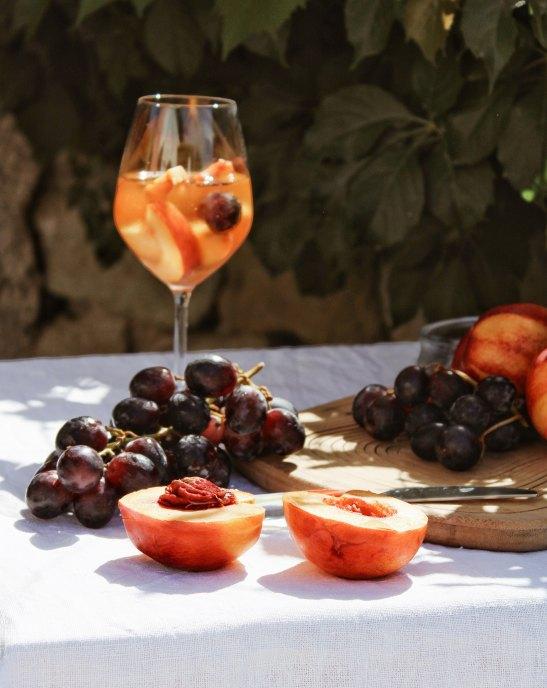
Romania is becoming known internationally through a terroir with extraordinary potential to cultivate local and international varieties. According to the latest statistics, following the conversion of vineyards, the current total area is about 191,000 hectares, an area that gives local wineries an extremely diverse terroir for growing a multitude of varieties, some of them unique.
In terms of productivity, according to OIV (Organisation Internationale de la vigne et du vin) statistics, Romania officially produces approximately 5.5 million hectoliters, ranking 7th in Europe and 13th in the world. And the most popular and planted variety (in all vineyards) is Feteasca Regală.
Feteasca Regală is a white variety, the most recently discovered from the 'Fetească family', from which dry, young, fresh aromatic white wines are made, with predominant aromas of green and citrus apples. Due to its acidity, this variety can be used in the production of sparkling wines and spirits. And it is a variety that can be grows well in all of Romania's vineyards.
Fetească Albă is a white grape variety from which elegant dry white wines can be created. It has high acidity, a friendly texture, and very good minerality, with well-defined aromas of white flowers, citrus, and hay. Wines with an aging potential of 3-4 years can also be obtained.
Crâmpoşia is a white pre-phylloxera grape variety with origins in ancient times and is emblematic of the Drăgăşani vineyard. It can be vinified as a single grape or in a blend. It is recognizable by its acidity freshness, and minerality It is recommended that it is consumed young and it impresses with delicious aromas of pears, citrus fruits, and yellow cherries.
Şarbă is a variety made from the crossing of two varieties, Tămâioasă Românească and Italian Riesling, which transforms it into an essential aromatic exponent in the vineyard of Moldova. It is distinguished by a
memorable floral character with notes variety is distinguished by of roses, acacia, elderflowers, and unmistakable aromas of acacia basil. It is a grape from which dry and flowers, honeycomb, and discreet dessert wines can be made. notes of basil. Considered a variety for white dessert wines with ageing Plăvaie stands out as a variety potential par excellence, lately a lot of cultivated almost exclusively in the fresh, dry wines have been created. area of southern Moldova, where Şarbă is also cultivated. The wines Grasa de Cotnari is for many a legend obtained from Plăvaie are best and a symbol of the glorious consumed in the first two years of life moments in the history of Moldova. and are distinguished by freshness, The wines created from this variety minerality, and intense aromas of impress with their fruity and aromatic grapefruit, pomelo, and lime. character. Vinified over the centuries as a white dessert wine with grapes Tămâioasa Românească is a synonym touched by botrytis (noble rot), in the of Romanian hospitality as it is a style of Tokaji wines, it impresses with 'descendant' of the Muscat family its unique aromas of acacia honey, from Greece, adapted in the honeycomb, candied apricots, Romanian viticultural area with almonds, ripe apricots, and quince. spectacular results. This aromatic

Zghihara de Huşi is a very old grape Fetească Neagră is a local variety Romanian vineyards and variety cultivated almost exclusively in whose clusters could be placed on the reference wines the village that gives it its name. It is flag of Romanian wine. It is famous for distinguished by its increased acidity its aromas of prunes, cherries, berries, The grapevine area in Romania is very that pleasantly 'tightens', minerality, dark chocolate, and oak (if matured in diverse, each region has essentially an and well-defined aromas of green barrique). It can be vinified both as autonomous climate, and it is all apples, pears, and citrus fruits. rosé and as red wine. It is a variety worth discovering. Local vineyards can from which wines with long ageing generally be divided into seven Busuioaca de Bohotin is a curious potential can be made. geographical areas. Legislatively, the variety for many, thanks to a peel that viticultural areas in Romania are prevents the winemaker creating a red Romanian vineyards also abound with divided into three classifications: DOC, wine with an intense color and full- international white and red grape IG (or GI), and varietal wine. DOC bodied structure, which is why it is varieties such as Aligoté, Muscat wines (Denumire de Origine created as a medium-sweet or sweet Ottonel, Sauvignon Blanc, and Controlată') or wines with controlled rosé wine. In recent years, wineries in Chardonnay, which impress with their designation of origin present certain Romania have created a dry, fresh fruitiness, typical aromas, and guarantees to the consumer Busuioacă de Bohotin with delicate winemaking style that is close to aromas in the style of Provence. It is perfection.
It is an appellation that guarantees the distinguished by the aromas of rose The terroir of Romanian vineyards is selection of grapes, their yield, origin, petals, basil, and red forest fruits. so diverse that even pretentious red minimum sugar limit at harvest, grapes such as Pinot Noir can be production technology, and in some Băbească Neagră is a local pre- planted, and in Transylvania it enjoys a cases the style of wine-making GI phylloxera variety, dating back to the climate similar to that in Burgundy. At (Geographical Indication) indicates a 14th century on Romanian vineyards. the same time, grapes like Merlot, high-quality standard, such as a DOC It is known for its red, ruby, medium- Cabernet Sauvignon, and Shiraz enjoy wine, the only difference is that the bodied wines, medium tannins, and a climate perfect for both rosé and red grape harvesting area is more velvety texture. In general, these wines wines in the vineyards of Dealu Mare, extensive. The wines that are neither have an aging potential of 3-5 years, Drăgăşani, Miniş-Măderat or DOC or the GI are called varietal but can also be consumed young Mehedinţi. wines.
This does not mean that varietal wines populations of Swabians and are necessarily of poorer quality, Hungarians have marked the simply that the area of origin of the production of wines, and their heritage grapes is not so strictly regulated. is still felt by the preservation of However, there have been exceptions Cadarcă, Blaufränkisch, and Furmint. when a varietal wine produced Also grapes like Pinot Noir, Merlot, pleasant surprises, obtaining a much Cabernet Sauvignon, Shiraz, and better score in blind tastings Fetească Neagră are planted here with compared to other DOC or GI wines. surprisingly good results.
Romania is a country with a North of Banat is the Crişana region, temperate-continental climate, with with the famous DOC Miniş-Măderat many points in common with France in and DOC Crişana wines. A region that terms of latitude and altitude. The stands out for its continental climate, Carpathian Mountains, which surround hot and relatively dry summers, and Transylvania, moderate the hot and cold winters. arid summers specific to this type of The soil is famous for the climate. predominant volcanic rocks and for the high concentration of iron, which Banat helps the red varieties such as From west to east, the wines and Cadarcă, Feteasca Neagră, and gastronomy of Romania are worth Cabernet Sauvignon a lot. In terms of tasting starting with Banat and white varieties, the region is famous especially with wines of DOC Recaş, for its high acidity white wines such as where, the legend has it, Bacchus was Mustoasa de Măderat and sparkling born. It is the smallest vineyard in wines. Romania and is distinguished by a temperate continental climate with Oltenia Mediterranean influences and soils To the southwest of the Carpathian such as clay, sand, and limestone. Mountains is the Oltenia region, where Throughout history, the minority there are several mportant vineyards
Perhaps the most famous of all is Drăgăşani, recently revitalized by the planting of specific varieties such as Novac, Negru de Drăgăşani and Crâmpoşie Selecţionată (Selected Crâmpoşie) Other DOC regions are Segarcea and Mehedinţi known for the production of aromatic white wines and complex red wines with a very high ageing potential
Going to the East, we find the famous Dealu Mare vineyard in the former historical province of Wallachia, which is the Romanian synonym for Bordeaux and Tuscany The region stretches for over 65 km over Prahova and Buzău counties. And the high altitude and warm summers and mild autumns make it probably the greatest region for the production of red wines Varieties such as Merlot Cabernet Sauvignon, Shiraz, and especially Feteasca Neagră are masterfully created
At the same time, the Dealu Mare vineyard is famous for the production of white dessert wines, especially from the Tămâioasă Românească and Muscat Ottonel

The region of Moldova (not to be confused with the neighboring Republic of Moldova) is perhaps the most complex and diversified local wine-growing area, totaling a whole series of microclimates and DOC and GI areas and comprising more than 30% of the entire cultivable grapevine area in Romania
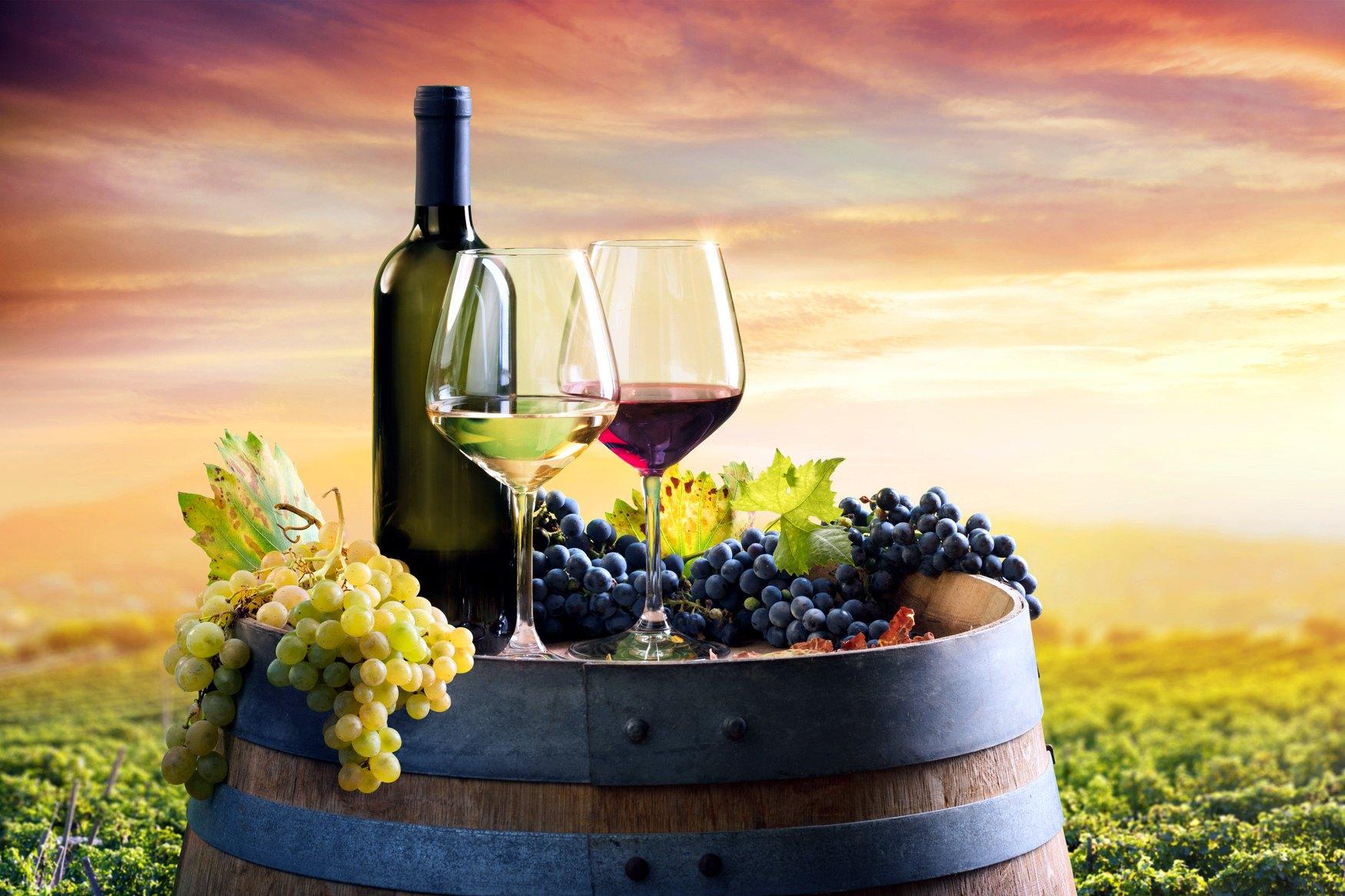
In the north lies the famous DOC Cotnari region, dedicated to white wines with memorable grape varieties such as Grasă de Cotnari, Frâncuşă, Fetească Albă, Fetească Regală, and Tămâioasă Românească. Descending to the south, the map of Moldova s full of DOC regions mprinted n the DNA of Romanians such as Huşi, where Zghihară comes from, or Nicoreşti, where Băbeasca Neagră comes from, as well as the vineyards of Coteşti, Odobeşti and Panciu, famous for the local varieties Şarbă, Plăvaie, but also for sparkling wines and spirits.
The legacy of 12th century Germans can still be seen today in Transylvania, a region located at an altitude of 460m above sea level. The cool and relatively rainy climate helps to produce fresh white wines with high acidity. These conditions are also highly valued by producers of sparkling wines or spirits At the same time, the
region is famous for the production of SERVE, Terra Romana Rosé, Fetească The body is robust, with an elegant rosé wines or red wines like Pinot Noir Neagră and Merlot texture and imposing tannins. Serve at The SERVE winery is the first producer a temperature of 18°C, with at least Dobrogea to create a dry rosé wine within the one hour of aeration before Near the Black Sea is the Dobrogea Terra Romana range. And the tradition consumption t goes well in the region where you can taste wines from still continues n this assemblage of company of a veal chops in truffle and some of the most famous local DOCs: Fetească Neagră and Merlot which parmesan sauce, Black Angus beef Babadag, Sarica-Niculiţel and impresses with a pale salmon color tartare, or duck breast in blackcurrant Murfatlar. The area is famous for its and a typical cherry and raspberry sauce. sunny climate and sparse rainfall. The nose. The wine s fresh, with increased red wines produced here are juicy, with acidity and elegant texture. Served at a Carastelec Carassia, Blanc de Blancs, velvety tannins and are highly temperature of 8-10°C, it can be Chardonnay aromatic while the wines produced served on its own or with tuna salad or Made in entirety by Chardonnay in the from Aligoté and Chardonnay are grilled salmon and asparagus traditional method, the sparkling wine famous for their freshness, minerality, from Carastelec delights us from the and elegance. Also, the unique climate Hermeziu Winery, C'est Soir, Busuioacă beginning with a pale golden yellow here favors the practice of biodynamic de Bohotin color and effervescent nose of biscuit, viticulture. Traditionally made as medium-sweet green apples, and apricots. The body is or sweet wine, the Busuioacă de delicate, the bubble density is Bohotin from this range is a dry wine abundant, and the aftertaste is that has a pale salmon color and the medium and elegant. Served at a aromatic nose of grapes and rose temperature of 4-6°C, it can be served
Best Romanian wines petals. The body is elegant, ample with on its own or in the company of a After a long period of absence and the typical aromas of raspberries and shellfish salad oysters, or white anonymity, the best word to describe May cherries. Served at a temperature truffles the 'new wave' of Romanian wines is of 8-10°C, it can be paired with salads, kaleidoscope. A kaleidoscope of fresh cheeses, chicken tikka masala, or Liliac Nectar, Muscat Ottonel flavors, bouquets, styles, and colors with your favorite food. It is said that any memorable feast that combine perfectly with different must end with a memorable dessert. In moods or dishes. Which is why we will Alira, Grand Vin, Fetească Neagră this case we are talking about a 'liquid try to make a selection of wines that The Fetească Neagră from the Grand dessert' that impresses with an intense best reproduce the terroir of region of Vin range has all the necessary golden yellow color and an explosive origin and the fantasy of their creators. elements to be called a wine with nose of acacia honey, candied apricots, typicity and a wine with ageing lychee, and passion fruit. Although t is Budureasca, Premium Fumé potential for at least 10 years. The an extremely sweet wine, the typical (Chardonnay, Sauvignon Blanc, Pinot color s dark ruby with a touch of acidity of Transylvanian wines gives it Gris) garnet, followed by a bouquet of balance and elegance. Served at a Budureasca Fumé is an assemblage truffles, prunes eucalyptus, and temperature of 9-11°C, t can be paired that opens in the glass with an intense espresso foam. The body is full, round perfectly with quince tart, sweet and golden yellow color and a rich nose with a velvety texture and a long raisin pie, or with blue cheese like full of sweet vanilla notes, mixed hints aftertaste with aromas of pepper Roquefort or Blue Stilton of peaches and quince. The body is cherries and dark chocolate. robust, with a velvety structure, Matured in oak barrels for 14 months complemented by a medium acidity it s best decanted for at least one hour and good minerality before consumption. The ideal serving The aftertaste is long, with final notes temperature is 18°C and it pairs very of citrus and oak. Consumed at a well with wild boar in red wine sauce, temperature of 8-10°C, t goes very sarmale with mutton, and beef in vine well with salads, seafood, or baked leaves, matured cheeses, or any chicken breast with sour cream. favorite recipe of red meat served 'blue'.

Casa de Vinuri Cotnari, Colocviu la Moscova, Grasă de Cotnari
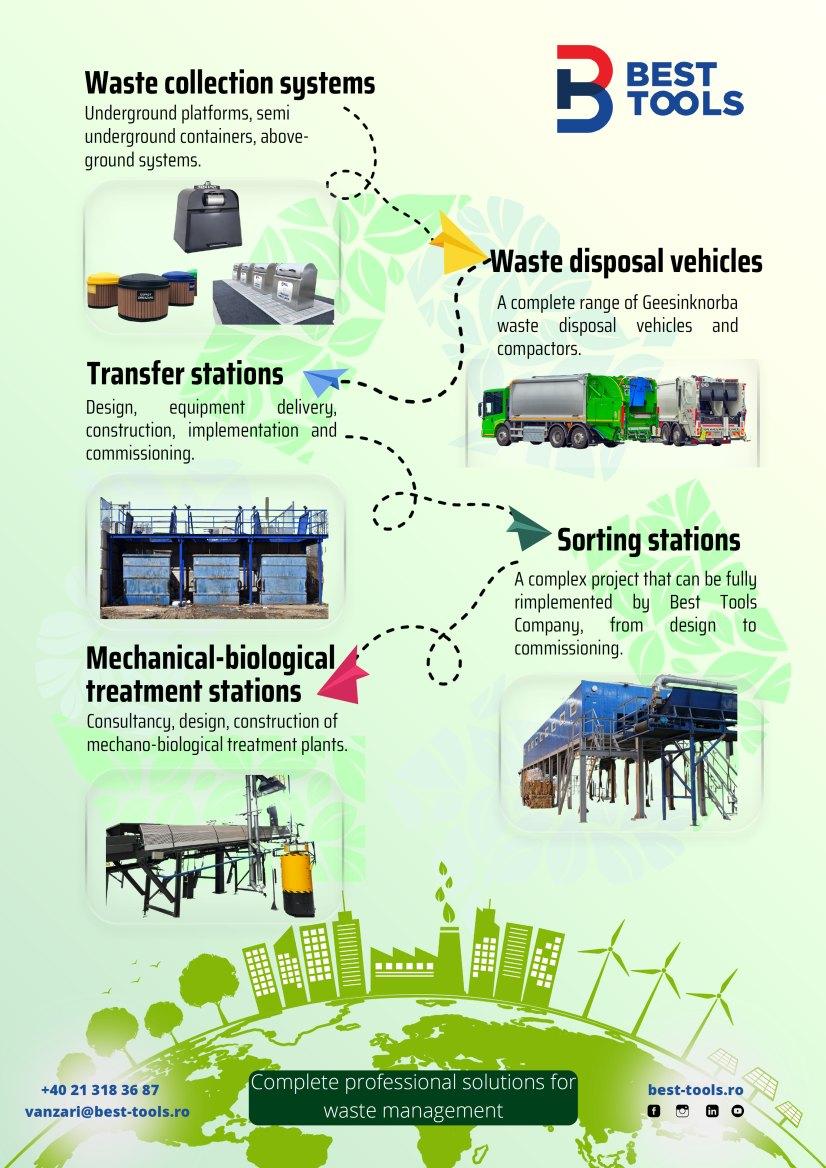
Davino, Flamboyant, Cabernet Grasa de Cotnari from the Colocviu
Sauvignon, Merlot, Fetească Neagră range 'breaks' the established tradition Flamboyant is a red assemblage that of dessert wines with a dry creation has set a new standard in the Dealu that delights the lovers of this grape. Mare vineyard. The “Trio” is made in The color is yellow-green with an Bordeaux style, with the presence of intense nose of honey, gooseberry am Fetească Neagră along with two well- and ginger recognized varieties. The wine has an Fresh and aromatic, the wine s best extraordinary aging potential and consumed at a temperature of 8-10°C begins with an ntense ruby red color and goes perfectly with fresh cheeses, and a well-defined nose of cedar, shrimp pasta, or your favorite food. leather, freshly ground coffee beans and blackcurrants
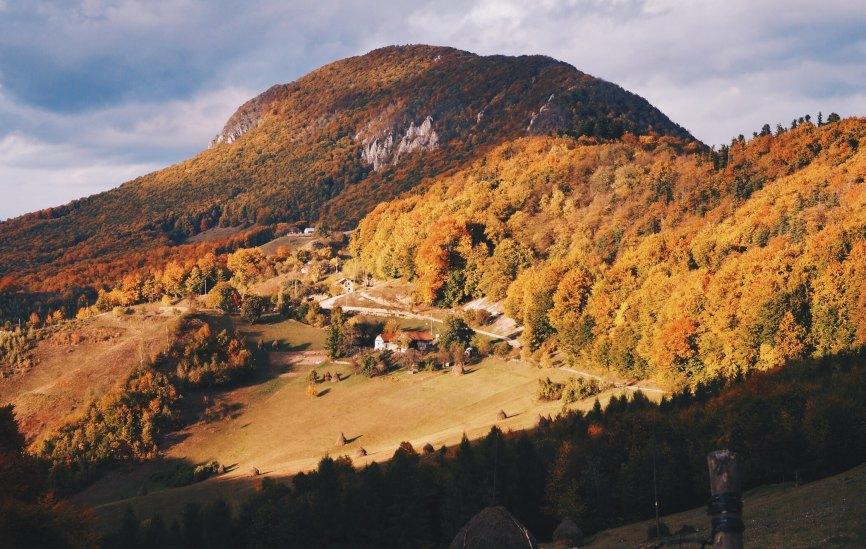
Villages in the Apuseni Mountains are even more remote and lost in time.


If you wish to discover local life and preserved traditions, one of the main points of interest is the Aries Valley, where the beautiful villages of Albac, Garda, and Arieseni are located. Skilled artisans, the Motzi people, carve musical instruments, hope chests and houses from the local wood, the spruce. In Patrahaitesti, a little mountain village, you may hear the famous Bucium ("Alps horns"), which are used for generations in the Apuseni Mountains.
The golden glow of the sun against the soft pastel houses; residents going about their business, tending the chickens, their vegetable gardens or sitting on the front porch can make an unforgettable scene. In villages and in the countryside, on lands dominated by ancestral castles, old fortresses and peaceful monasteries, life moves a little slower and follows ancient rhythms of tradition and culture.
It's not unusual to see a farmer
sheepherding, have been carefully
bringing his fruits to the marketplace passed down from generation to In Transylvania, you will find villages in a horse drawn wagon or to generation in the villages of this area. clustered around ancient Saxon encounter a village festival where the Rasinari, dating to 1204, is the oldest, citadels, edifices that often enclose locals perform ancient rites of followed by Talmaciu (1318), Orlat exquisite churches built by German planting and harvest dressed in (1322) and Saliste (1354). Saliste settlers from the 12th to the 16th colorful traditional costumes. Cold, claims the oldest church, housing centuries. pure well water beckons the thirsty beautiful interior frescoes (1674), while A lovely half-hour drive south of the traveler from the roadside. Men kiss Poiana Sibiului's wooden church was medieval city of Sibiu takes you into women's hands in a courtly greeting built in 1771. Painting on glass has the pastoral landscapes of unchanged for hundreds of years. been a tradition for 200 years in these Marginimea Sibiului, one of Lush vineyards, first planted by villages. The Museum of Painted Glass
Transylvania's best-preserved Dacians – ancient inhabitants of Icons in Sibiel exhibits the largest ethnographic areas. Located at the Romania, yield fine wines. collection of painted glass icons in foothills of the Cindrel Mountains, Europe - more than 700, as well as Marginimea Sibiului (meaning furniture and ceramics. Boundaries of Sibiu) encompasses a The 18 villages are: Boita, Sadu, Raul string of 18 traditional Romanian Sadului, Talmaciu, Talmacel. Rasinari, villages*, rich in architecture, history Poplaca, Gura Raului, Orlat, and heritage. Age-old traditions, Fantanele, Sibiel, Vale, Saliste, Gales, customs and celebrations, as well as the traditional occupation of Tilisca, Rod, Poiana Sibiului and Jina.
The road from Bistrita to the Painted Monasteries of Bucovina runs east through the Bargau Valley and across the Tihuta Pass which peaks at 3,840 feet. The Bargau Valley encompasses some of the most beautiful unspoiled mountain scenery in the Carpathians with picturesque traditional villages located in valleys and on hillsides, ideal bases for hiking, riding or discovering their vivid tapestry of old customs, handicrafts and folklore. Explore the traditional villages in the Bargau Valley: Livazele (5 miles northeast of Bistrita) with its small folk museum called the Saxon House (Casa Saseasca) displaying Saxon ceramics, woodcarvings and folk
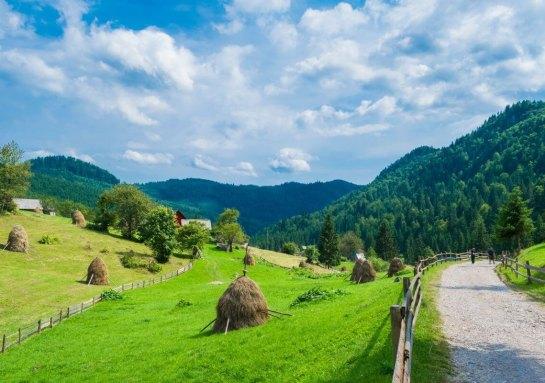
dresses; Josenii Bargaului (10 miles northeast of Bistrita), a traditional center for black and colored pottery, and Prundu Bargaului (15 miles northeast of Bistrita), the site of the first paper mill in Romania opened here in 1768
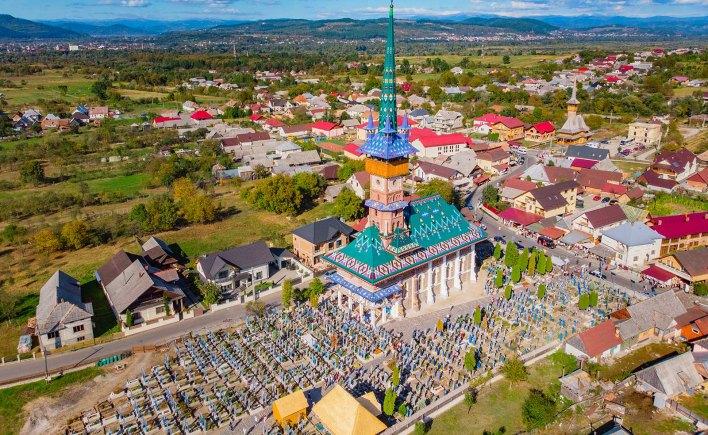
Some of Romania's most beautiful countryside is found n Bucovina whose rolling green hills nestle villages and monasteries in their valleys. Horses, decked with redtasseled bridles, travel country lanes, as villagers crows churchyards in traditional folk dress on Sundays and holidays. Bucovina remains the heart of craft mastery in Moldova. A felt mill in Vama serves the villages women, who bring their homespun wool cloth to be thickened for heavy coats against the harsh winters.
The village of Marginea, located just 7 miles northeast of Sucevita Monastery, is renowned for the black clay pottery crafted here, said to preserve a centuries-old Gaeto-Dacian technique, passed on from generation to generation. Winter festivals abound with caroling bands of merrymakers dressed in handmade masks and costumes celebrating the New Year.
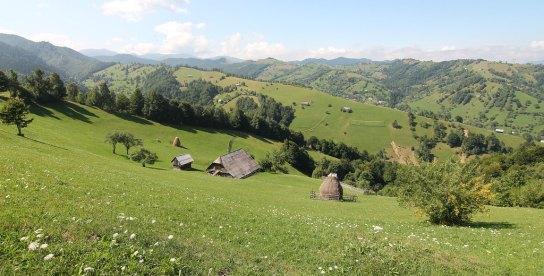
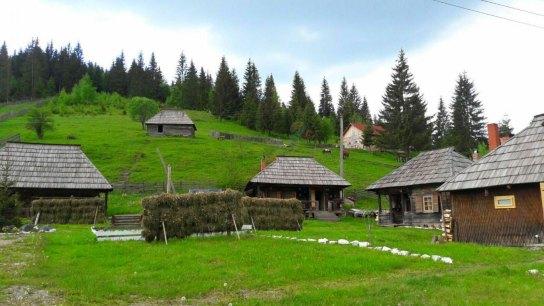
Maramures s an area of the country known for ts timeless tranquility. In late afternoon, old women sit outside their gates coaxing coarse wool onto spindles Many still favor traditional dress, meaning white frounced blouses, striped woven panels covering full black skirts headscarves and opinci a sort of leather ballet slipper from which heavy yarn criss-crosses over thick socks.
On Sunday, such dress is practically "de rigueur", even for little girls. Baia Mare is a good starting point for visiting some of the area's traditional villages: Iza, Viseu, Mara and Cosau. The villages of this remote Northern region are known for masterpieces of elaborately carved wooden roadside gates leading to family homes. The knots and sun designs of these traditional gates come from ancient pagan motifs. Popular motifs include grapevines, acorns, twisted rope, sun symbols, crosses and forest animals.
The villages of Barsana and Oncesti have, perhaps, the greatest number of impressive wooden gates. Ciocanesti (in Bucovina region) s known for its houses covered with painted flowers and geometric paterns
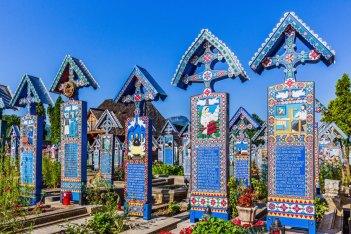
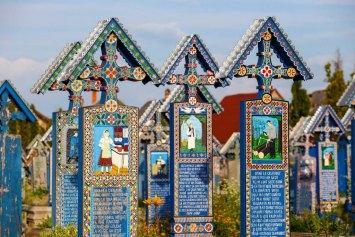

Also unique to this region are the more apparent than in Sapanta – a 20- with beautiful images and gentle witlocal village churches, made of wood minute drive from Sighet. The town By John Moore, Toronto Star) and dominated by magnificent Gothic folks' ancestors considered death as a Village experiences are made even spires. Hardly a village lacks its own beginning, not the end, and this faith is more authentic by staying in a private small wooden church dating to the reflected in the carvings in the town's home, a monastery or a guesthouse. 17th and 18th centuries. These are unique Merry Cemetery Blue wooden Most accommodations in Romanian exquisite, high-steepled jewels with crosses feature a carved scene and villages offer comfortable rooms, multiple gabled roofs, all of a pattern humorous verses that endeavor to running cold and hot water and yet each distinctly unique. Seeing at capture essential elements - both the western-style toilets. They are often least a few interiors is a must as many good and the imperfections - of the also remarkably low in cost. frescoes remain in good condition. If deceased's life. Even without benefit of If journeying out to rural Romania is time is limited, the interiors at Ieud, translation, visitors can appreciate the not on your itinerary you can also get Bogdan Voda and Poenile Izei are handiwork of sculptor Stan Ion Patras, a taste of this vibrant and exotic recommended. The latter depicts who began carving these epitaphs in culture by visiting one of Romania's some highly original torments for 1935, and his successors. Patras' museums dedicated to rural life: the such sins as sleeping in church. house in the village is now a Village Museum and the Museum of Although churches are usually locked, fascinating museum. Sapanta is also the Romanian Peasant in Bucharest ask any passerby for the key-keeper by home to several wooden gates and and the ASTRA Museum of Rural pointing at the door and saying cheia one of the region's tallest wooden Civilization in Sibiu. Real landmarks of (pronounced kay-ya), meaning the key churches. rural architecture - homes, churches, The spiritual philosophy of the people (The Last Laugh: In the Merry schools - are set in tranquil parklands of Maramures is perhaps nowhere Cemetery, grave markers celebrate life just beyond the city center

From the province of Moldavia, head offers its share, and more, of wooden wooden church dating to the 17th and westward along a good, but houses, many with sculpted designs 18th centuries. These are exquisite, mountainous, road to Romania's most on balconies and around entrances. high-steepled jewels with multiple traditional region, Maramures. The Then, there are the towering carved gabled roofs, all of a pattern yet each drive takes about five hours with no wooden gates, attached to fences half distinctly unique Seeing at least a few stops, but this is virtually an their size, rising before even modest interiors is a must as many frescoes impossibility, especially for dwellings. remain in good condition. If time is photographers. Picturesque villages Popular motifs include grapevines, limited, the interiors at Ieud, Bogdan (notably Ciocanesti, whose houses acorns, twisted rope, sun symbols, Voda and Poenile Izei are covered with painted flowers and crosses and forest animals. The recommended.The latter depicts geometrics make it arguably Romania villages of Barsana and Oncesti have, some highly original torments for s prettiest village), spectacular perhaps, the greatest number of such sins as sleeping in church. mountain scenery and a unique impressive gates Although churches are usually locked, museum smack in the middle of Maramures is Brigadoon land where ask any passerby for the key-keeper by nowhere The Museum of the Tree the way of life has changed little over pointing at the door and saying "cheia" Roots (Muzeul Radacinilor) with a the centuries. In late afternoon, old (pronounced kay-ya), meaning the key bizarre exhibit of figures sculpted women sit outside their gates coaxing Romanians are extremely kind and from tree roots all beg inspection. coarse wool onto spindles. Many still friendly and will be sure to help. While Gawking becomes even more favor traditional dress, meaning white the main tourist activities n demanding once Maramures is frounced blouses, striped woven Maramures are gate- church- and reached At Mosei, turn left toward panels covering full black skirts, people-viewing the town of Sighetu Bistrita, then right after a few miles headscarves and "opinci", a sort of Marmatiei has a few attractions worth toward Sacel and Sighetu Marmatiei, leather ballet slipper from which visiting The outdoor village museum, the principal town. (Sighetu also can heavy yarn criss-crosses over thick on the road into town, boasts dozens be reached by continuing straight at socks. On Sunday such dress is of homes and farm buildings Mosei, but the lower road passes practically de rigueur even for little assembled from around Maramures through the region' s most traditional girls. county Even Oncesti s wooden villages.) From Sacel on, each village Hardly a village lacks ts own small church has been relocated here.
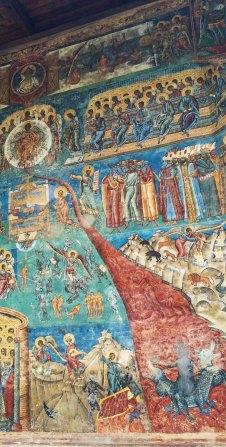
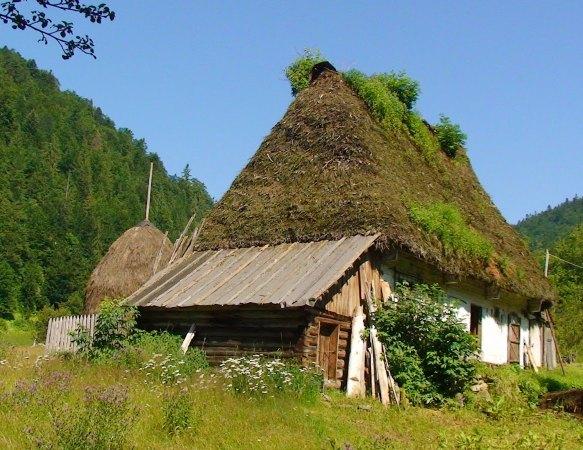
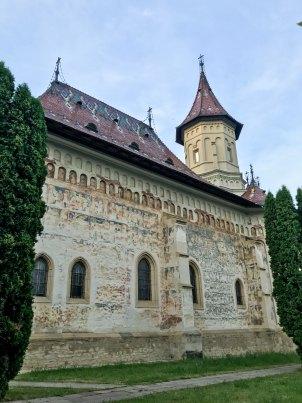


For a look at Romania s more recent past, an hour spent at Sighetu' s Museum of Arrested Thought is instructive. Though only a block or two off the main street, it is not easy to find. Ask for the "Muzeul Inchisorii" (pronounced moo zow ool un kee swah ree), meaning prison museum Although built in the days of AustrianHungarian rule, the Communist regime utilized the prison for opposition leaders and intellectuals. Three tiers of cells and various exhibits may be viewed; an Englishspeaking guide is available. An old synagogue (currently under restoration) and the childhood home of author Elie Wiesel (not open to the public) also are in Sighetul Marmatiei (Sighet for short).
No trip to Maramures is complete without a look at the Merry Cemetery of Sapanta, a 20-minute drive from Sighet. Here, colorful folk art pictures and witty words carved into wooden headstones immortalize the deceased's foibles, occupations or family problems. No translations, but the pictures tell much of the story. An old woman bakes round loaves of bread, a young person bends in scholarly fashion over his books, one man is shot by soldiers while another tends his flock of sheep. Beauty assumes many forms. For most travelers, the enduring traditions of Maramures and the magnificence of Bucovina's painted monasteries will define two of them.


Mobilizing excess savings in advanced economies for much-needed investment in green infrastructure in emerging-market and developing economies will not be easy. But it is possible, if both the public and private sectors do
can also bring partners into specific significant complexity and regulatory risk-management tools at their deals through syndications. risk, especially when risks are harder to disposal. Sophisticated, developed For its part, the private sector has a identify and measure in advance. The financial markets and instruments number of instruments at its disposal costs of this process can largely be would help by enabling financial with which to manage risk. For recouped when public-private agents to take on risks that are in line example, companies can use risk- partnerships (such as concessions) are with their appetites and capacities. transfer and credit-enhancement established. Public-sector planning It will not be easy But with these instruments, which are currently being and priority-setting is essential. building blocks, we can construct the piloted by national and multilateral most important infrastructure of all: development banks. These include But private investors must also the bridge connecting advancedguarantees, insurance policies, and embrace a more active role, including country savings and EMDEs' financing hedging mechanisms under which, for by taking advantage of the needs. a fee, a provider agrees to compensate the concessionaire (or its lenders) in case of default or loss arising from some specified circumstance.
Karim El Aynaoui - Executive President of the Policy Center for the New South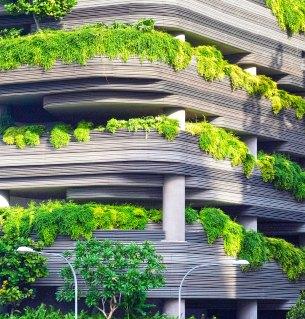
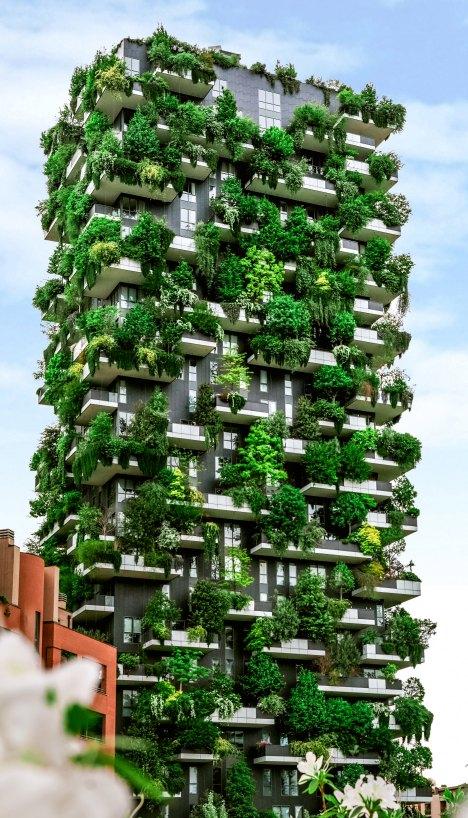
To spur development and fight operation). Inadequate risk coverage, A dearth of appropriate financial climate change, emerging-market and lack of data, and the heterogeneity of instruments – and the costs and developing economies (EMDEs) will project structures, regulatory complexity of the instruments that are need huge amounts of investment in environments, and contractual available – is yet another potential green infrastructure over the next few standards can all act as barriers to barrier to infrastructure investment in decades. But many of these countries investment. the EMDEs. Fixed-income instruments have limited fiscal space, especially The challenge is to define “attractive – including bonds (project, municipal, after the shocks of the last few years. investment opportunities” and match sub-sovereign, and green bonds, as Given this, to meet the EMDEs' investors to them in a more systematic well as sukuk), and loans (direct and infrastructure needs, we must mobilize way Central to this effort should be co-investment lending to excess private savings in the advanced the provision of a wide range of well- infrastructure projects and syndicated economies. The question is how structured investment products project loans) – can help solve this The first step toward building a bridge tailored for different types of problem, as they could appeal to a between private savings and institutional investors and their broad range of institutional investors infrastructure investment in EMDEs is respective risk/return profiles. For in the EMDEs. to understand investors' needs. example, institutional investors (such Institutional investors, like all other as pension funds) might be inclined to Multilateral finance institutions have types of debt and equity investors, participate at a project's earlier stages an important role to play in drawing have their own incentives, constraints, (prior to operation) if refinancing risks private capital toward long-term and objectives, all of which inform are covered and construction risk is projects that could spur development their allocations of funds, including addressed. in countries and sectors that capital which types of projects (greenfield vs. Currency risk poses another challenge markets perceive as high-risk. By brownfield) to support, where, and at for investors in EMDEs. Here, export providing funding, guarantees, or both, what stage of the project cycle credit agencies may be able to help, such institutions can de-risk projects (development, construction, or though often at high cost. and crowd in private investment. They
Political-risk insurance is particularly important here. Some sectors – such as telecommunications or electricity –are more prone to regulatory volatility or the effects of political pressure (including on prices). This implies the need for greater scrutiny from infrastructure investors and customized risk-mitigation mechanisms.
A project's financial structure is key Experience shows that a diverse mix of funders for a project – including domestic, international, and multilateral banks and owners – can deter political intervention and act as a buffer against shocks. And just as strategic alliances with foreign entities provide local actors with a hedge against political intervention, partnerships with local companies can help an infrastructure operator transcend the “foreign investor” label.
In transforming today's savingsliquidity glut into much-needed investment in green EMDE infrastructure, the public and private sectors both have important roles to play Policymakers must increase the transparency of legal frameworks and achieve political and regulatory stability recognizing that the public sector will ultimately bear the high transaction costs incurred by private investors when they channel financial resources to EMDEs.
Institutional investors and other financial intermediaries, as well as non-banking financial institutions, often highlight the lack of a pipeline of investment-ready projects. To improve their options, the public sector should take more responsibility for project design in situations characterized by
their parts.Otaviano Canuto - former vice president and executive director of the World Bank and executive director of the International Monetary Fund
Overlapping shocks and a breakdown in international cooperation has made crisis management all but impossible – at least with the standard tools. The challenge demands new thinking and a willingness on the part of systemically important players to contain their strategic rivalries
Make no mistake: We no longer live in a stable international rules-based order. The days of unipolarity and global liberalism are over, and we are now facing a confluence of shocks unlike anything most of us have seen in our lifetimes. No pilot is flying the plane: the closest thing we have to a cockpit, the G20, is fractured and deadlocked, despite Indonesia's valiant efforts as this year's president.
Bertrand Badré Yves Tiberghien
former managing director of the World Bank, is CEO and Founder of Blue like an Orange Sustainable Capital

Professor of Political Science and Director Emeritus of the Institute of Asian Research at the University of British Columbia
are disrupting lives, reducing food supplies (which were already endangered by Russia's war), and fragmenting societies.
Sixth, there are still deep postpandemic uncertainties with respect to supply chains, energy and food markets, and inflation. It is anyone's guess what global financial markets will do this fall, but talk of tighter financial conditions and recession is in the air
Seventh, these food, energy, climate, demonstrated in recent decades. and economic shocks are likely to There are huge untapped possibilities trigger social and democratic to be explored through alternative breakdown in many parts of the world, approaches to global and collective its nationalist mobilization and especially if the G20 cannot agree on governance. These include new intensifying social control – including safety-net measures such as debt platforms like the Paris Peace Forum, its economically disastrous “zero- relief. Lebanon Sr Lanka, Pakistan, Global Solutions Initiative, and Jeju COVID” policy, closed borders, and and Ethiopia are already in the throes Forum for Peace and Prosperity, which other restrictions. of political and socioeconomic chaos. bring multiple actors together to Will China entrench its new isolation, incubate new models, or interor will it take some steps back toward Finally, the coming months will stress regional groups such as the Alliance international connectivity and test global-governance mechanisms for Multilateralism. The G20 should economic liberalization? like never before. initiate a taskforce on common long-term existential questions and mutual misperceptions. We urgently need a competitive bottom-up search for new ideas.
The international institutions, norms, as well, the economy itself can breakthroughs, US democracy is n and practices that we continue to rely behave erratically and appear deep crisis Most decision-making on are increasingly being eclipsed by unstable.” Under these conditions, remains crippled by legislative geopolitics. Whatever their rhetoric, predictions and conventional policy gridlock and an activist Supreme China, Russia, and the United States tools stop working Court and extremism is on the rise. In have lost faith in global institutions, a recent book, the international withholding their support whenever it The first major challenge is Russia's relations scholar Barbara F. Walter suits their interests. While the war in Ukraine, which shows no end in warns that many well-known European Union, Japan, the United sight (notwithstanding the Ukrainian indicators of impending civil war are Kingdom Canada, and major players armed forces' recent gains) The tit- flashing red in the US. A major survey from the Global South continue to for-tat weaponization of economic published n November 2021 found support multilateralism, global linkages has generated a huge global that 30% of Republicans, and 18% of governance cannot really be energy shock that will aggravate Americans overall, agree with the sustained without the participation of deeper social and political crises in statement “Because things have the world's largest economies and Europe and around the world this fall. gotten so far off track, true American military powers. While the G7, Australia, and South patriots may have to resort to violence Making matters worse, the world is Korea have taken steps to freeze in order to save our country.” facing at least eight systemic Russia out of the global dollar system challenges simultaneously As former and nterbank messaging network Third, China is at a fork in the road. Canadian central bank governor (SWIFT), Global South powers have The 20th Party Congress this October Stephen Poloz explains n his book not joined the sanctions regime, almost certainly will solidify President The Next Age of Uncertainty, “when leaving the G20 split on this issue. Xi Jinping's rule and install key multiple long-term forces are acting powerholders for the next five years together on the economy through Second, despite the Biden or longer. We will then see whether time, and interacting with one another administration's recent legislative the regime intends to double down on
Third, large, systemically important players have a historic responsibility The answer to that question will All eyes will be on the November to contain their own military and determine the answers to many 15-16 G20 summit in Bali, the security rivalries, and to support others. As matters stand, the US and November 18-19 Asia-Pacific countries that face hardship as a Chinese political trajectories are Economic Cooperation Summit in result of the large powers' actions. In fueling a confrontational spiral that Thailand and the November 6-18 the past, we have found ways to cannot end well for either side. COP27 climate conference in Sharm defuse the threat of mutual nsecurity El-Sheikh Egypt Sadly, it is hard to through regular global meetings and Fourth, after a period of remarkable expect much from any of these platforms like the Stockholm unity in response to Russia's invasion gatherings Conference on Confidence- and of Ukraine, the EU is entering an What should be done? Security-Building Measures and extraordinarily risky period of First, these interacting shocks must be Disarmament in Europe; we must do intertwined energy, economic and faced with pragmatism, rather than so again today social shocks. Italians seem poised to ideology, recognizing that a failure to elect a right-wing nationalist act collectively will put the future of As for all the other countries, government later this month; French human civilization itself at risk. Since companies, foundations, civil-society governance is divided; and eastern we remain closely connected through groups, and NGOs, the task now is to member states remain vulnerable to technology, climate, travel, and the generate ideas and form networks and Russian threats broader world economy, global coalitions, with a focus on building governance through exclusive resilience and developing anti-fragile Fifth, climate-related disasters are regional or ideological clubs simply systems. If the big players fail to do intensifying globally – and much will not suffice. their part, our last chance may rest earlier than expected. Across South Second, political leaders and with these stakeholders in the middle Asia, the Pacific, China Europe, Africa, policymakers must figure out how to and the Americas, heatwaves, match the kind of imagination that droughts, wildfires, and mega floods business and technology leaders have
While Romania is better known internationally for Dracula, Transylvania, and Nadia Comaneci, its lesser- known cuisine is something well worth exploring. Traditional Romanian food brings together a mix of ingredients and are heavily influenced by Balkan, Turkish, Serbian, German, and Hungarian cuisines. Due to this enriched experience, Romanian food is varied, filling, and very savory.

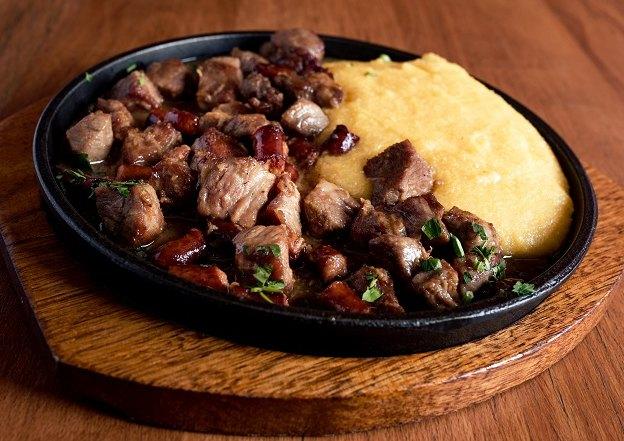

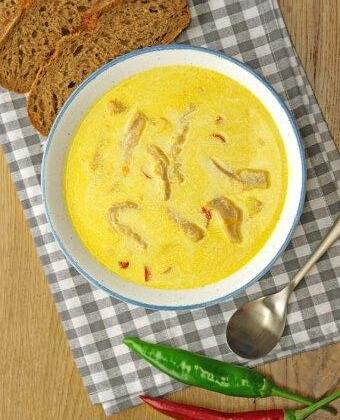

This is a real comfort food that you can find at every traditional Romanian wedding, or that you can smell on the street during Christmas and New Year holidays. It is made of minced meat (usually pork or in combination with poultry) mixed with spices, rice, and onions, then rolled up in sour (fermented) cabbage leaves, and boiled for hours in a special sauce made of sauerkraut juice, tomato juice, and other secret ingredients.

In some Romanian regions they use vine leaves instead of cabbage. For fasting or for a vegan choice, the minced meat can be very successfully replaced with a mixture of ground nuts, grated carrots, and chopped mushrooms. Sărmăluțe, as you can find them on restaurant menus, are served with sour cream and hot mămăligă, which brings us to the next staple food.

Usually a side dish for sarmale or served plain with sour cream and Romanian cheese, mămăligă is made from corn flour boiled in water with a pinch of salt and a few drops of sunflower oil. It's very healthy and also pairs well with gravies or stews. Shepherds like to mix it up with salty sheep cheese and make a specialty called “bulz”.
Literally translated as “Small ones” because they used to This dish comes from an old rural tradition, and the two be only as big as an adult finger, Mici are truly delicious are best experienced together to get the true taste of it. and very popular on barbeques, street food, cottage The tradition takes place in the cold, crispy air of weekends, and birthday celebrations. December, when pigs are sacrificed for Christmas dinner It's another food that can be smelled from miles away and Fresh meat cut from a recently slaughtered pig is fried in makes you mouth water; and it is easy to make. All you its own fat in a deep pan. This savory food goes down well need is minced pork and beef mixed with garlic, spices, served with authentic pickles. Restaurants often have this and sodium bicarbonate. meal on the menu, but if the pig is not freshly slaughtered, Form the mixture into small sausage-like portions and put it doesn't have the same taste. them on the grill. Juicy on the inside, crispy on the outside, you can savor them best with only mustard and bread.
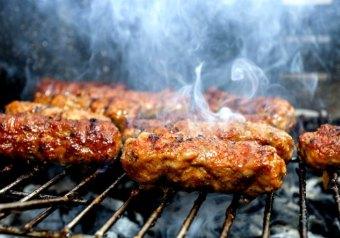
For a bold and brave experience when traveling abroad, you have to try one of the most popular soups in Romania – Beef Tripe Soup. While the name may not sound too appealing, it's a real delicacy and is sure to make your tongue dance.
Considered the ultimate hangover remedy Tripe Soup is made from the stomach of a cow, vegetables, and special bones, flavored with lots of garlic and soured with vinegar Hot chili peppers go with it very well.
From the same sacrifice of the pig, Romanians make a crunchy, salty starter called jumări from frying bits of bacon and pig fat.
This is best served warm and always accompanied with raw onions and a shot of țuică, the traditional plum brandy, as a digestive. As delicious as it may be, you don't want to overdo it if you still want your pants to fit.


9. Papanaș
There is no Christmas or Easter without this traditional Returning to desserts, Papanași always makes you come Romanian dessert. The pride of every cook, Cozonac can back for more. Originating from the northern part of the be a real challenge for a household because it has to be country, this calorie bomb is very popular among all done right.
Romanians with a sweet tooth.
Kneading the dough is demanding work and the whole It's a donut shaped cottage cheese and semolina mixture process takes a while, but the result is truly rewarding. This that is first fried and then covered in sour cream and jam, Romanian dessert is a type of sweetbread filled with sweet preferabbly blueberry. This sour and sweet combination is walnut paste, poppy seed paste, or Turkish delight and a complete delight for your senses and feast for your eyes. raisins.
It can also be found all year round in stores or fairs, but

10. Salata De Boeuf
nothing compares with the taste of a homemade one. No dinner party is complete without Beef Salad. This festive dish is really easy to make from ingredients “saved” from making a soup Along with vegetables and meat cut into small cubes, the dish includes mayonnaise and is completed with pickles.
The original recipe is made with beef but nowadays many Romanians replace the beef with chicken.


Romanian food may not look very fancy but it's very tasty and inviting. The recipes are being passed forward through generations without losing their identity or taste.
Lamb Drob is a festive Easter dish that looks like meatloaf with boiled eggs inside. But this tasty appetizer is much more than meets the eye. Minced lamb offal, green onions, eggs, and bread dipped in milk are baked together along with fresh cut herbs, such as dill and parsley and garlic.

During preparations, special attention is paid to washing the offal. There is also a variation with chicken or turkey liver that some people prefer Lamb Drob is served cold.
